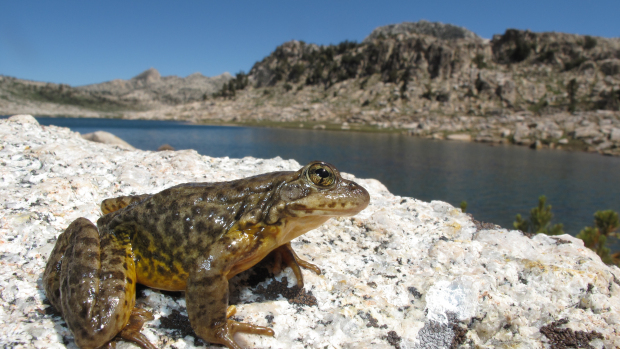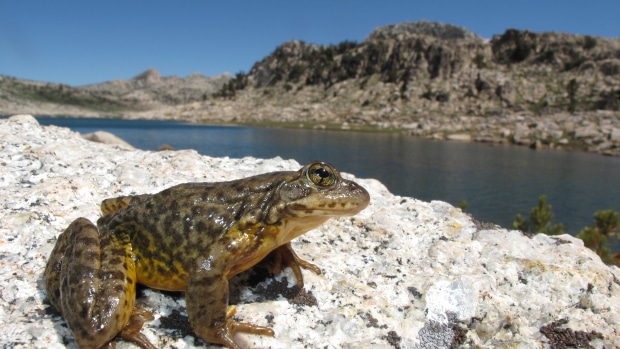A tree thinning project to decrease the change of catastrophic wildfires at Lake Tahoe has been postponed due to concerns that the project could have
A tree thinning project to decrease the change of catastrophic wildfires at Lake Tahoe has been postponed due to concerns that the project could have negative effects on the Sierra Nevada yellow-legged frog (Rana sierrae). Last year, University of Nevada, Reno conservation biologist Dennis Murphy filed a lawsuit last year in an effort to stop the tree thinning program, and said that the logging threatens the frog’s survival. The frog was listed as an endangered species in April 2014
Read More About This Important Endangered Species
Mountain and Sierra Yellow Legged Frogs Added to Endangered Species List
Sierra Nevada Yellow-Legged Frog
Scientists Try To Inoculate Sierra Yellow-Legged Frog Tadpoles Against Chytrid
The area involved includes upper Echo Lake, which is less than 10 miles from South Lake Tahoe. The U.S. Forest Service has been removing trees in the area and burning the trees and the brush on land near the lake. This area has been considered as a designated critical habitat for the amphibian. The service has agreed to stop the tree thinning project the rest of this year and would consult with the U.S. Fish and Wildlife Service on potential effects the tree thinning has on the frogs and its habitat.

Devin Edmonds/USGS
The Sierra Nevada yellow-legged frog was declared an endangered species this year.
Murphy’s suit says the U.S. Forest Service was in violation of the National Environmental Policy Act by not preparing an environmental impact statement or an environmental assessment.
“At a minimum, the Forest Service should have conducted surveys of the project area to determine whether its activities would harm the species and its habitat,” Murphy said in a statement. “But instead the agency put on blinders to the impacts of the project hoping no one would notice.”
John B. Virata keeps a ball python, two corn snakes, a king snake, and two leopard geckos. His first snake, a California kingsnake, was purchased at the Pet Place in Westminster, CA for $5.


